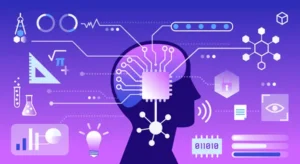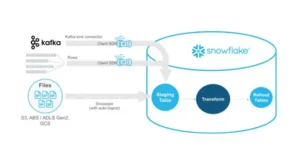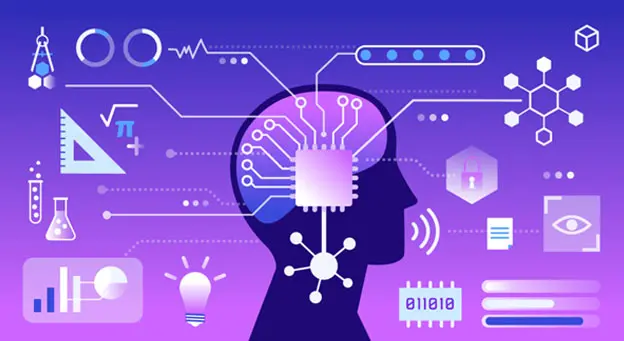
How LLMs Are Revolutionizing Text Mining and Data Extraction from Unstructured Data
Leveraging LLMs for Advanced Text Mining and Data Extraction from Unstructured Data
Enhancing Text Mining and Data Extraction with LLMs
- Put the Named Entity Recognition (NER) into practice: In the huge text datasets, find people, organizations, dates and legal terms.
- Analyse sentiment: Detect the feelings/emotions being expressed by reviews, complaints, and consumer feedback.
- Go Beyond Keyword Matching: Enable Contextual Search, thereby allowing you to search your text more on the content of your page rather than just keywords.
- Creating Summaries of Large Documents: Summarizing legal documents, research papers, and contracts so that businesses can easily manage large material.
- Determine Relationship Between the Entities: Identify relationships between people, organisations and places in financial and legal documents.
- Extract Crucial Phrases and Information: Extract useful phrases and information from very large text collections automatically.
Advantages of Using LLMs for Text Mining and Data Extraction
Enhanced Speed and Efficiency
The time needed for manual document evaluations is substantially reduced by LLMs’ ability to process enormous volumes of unstructured text in a matter of seconds. Healthcare organisations, financial institutions, and law firms will find this very helpful.
Increased Accuracy and Lower Errors
LLMs comprehend context, which lowers the possibility of misunderstandings or the omission of important information, in contrast to traditional rule-based systems. They minimise human error in tasks such as compliance monitoring and contract analysis.
Savings on expenditures
By automating data extraction, businesses may better deploy their resources and save labour costs. Large teams are no longer needed for reviewing documents because LLMs are capable of handling these tasks effectively.
Scalability
Because LLMs can analyse hundreds of documents at once, they are perfect for businesses that handle a lot of text data, including banking healthcare companies and legal industries.
Improved Risk Management and Compliance
By extracting important terms and conditions from contracts, policies, and regulatory documents, LLM-powered data extraction tools help ensure compliance in industries like finance and healthcare with strict regulatory standards.
Better Experience for Customers
Businesses can swiftly spot common problems, raise customer satisfaction, and improve service quality by analysing customer support interactions, feedback, and complaints.
Real-World Use Cases of Companies Employing LLMs for Text Mining and Data Extraction in Unstructured Data
- JPMorgan Chase
JPMorgan created COIN (Contract Intelligence), an artificial intelligence (AI) system that extracts important information from legal contracts.
How It Operates:
- Commercial loan agreements are scanned by COIN to find obligations, risks, and compliance needs.
- Cuts the annual contract review time down from 360,000 hours to just a few seconds.
Result:
- Increased effectiveness in managing contracts.
- Less possibility of human error when processing legal documents.
- Walmart
Walmart uses LLMs for analysing customer reviews, social media posts, and support issue feedback.
How It Operates:
- AI classifies complaints and recognises typical customer concerns.
- Sentiment analysis identifies patterns of unfavourable feedback to enhance customer support.
Result:
- Increased customer satisfaction and service quality.
- Quicker settlement of problems with data-driven decision-making.
- Deloitte
To extract important compliance and risk elements from financial and legal documents, Deloitte employs LLMs.
How It Operates:
- AI looks for irregularities and fraud threats in contracts and regulatory filings.
- When there are inconsistencies in financial documents, auditors are alerted automatically.
Result:
- Quicker risk assessments and compliance checks.
- Decreased involvement of humans in document analyses.
- Thomson Reuters
Thomson Reuters incorporates LLMs into its Westlaw Edge platform to analyse legal texts.
How It Operates:
- AI extracts relevant statutes, case law, and regulatory papers.
- Gives lawyers accurate search results by using contextual knowledge.
Result:
- Quicker and more precise legal research.
- Improved effectiveness in preparing court cases.
Challenges Faced in Using LLMs for Text Mining and Data Extraction
Data Privacy and Security
Strong security measures are required when handling sensitive data to ensure compliance with laws such as GDPR and HIPAA.
Interpretability and Model Bias
Biases from training data may be inherited by LLMs, generating skewed outcomes. To interpret model decisions, organisations need to employ explainable AI strategies.
Legacy System Integration
Because many businesses still use obsolete IT infrastructure, adopting AI might be difficult. Cloud-based AI services and APIs can aid in bridging this gap.
Cost and Processing Power
It takes a lot of processing power to train and implement LLMs. OpenAI, Google, and AWS cloud-based data extraction tools can help mitigate infrastructure costs and simplify deployment.
Way Forward
Multimodal AI Developments
In addition to processing text, future models will also analyse sounds, photos, and videos, increasing the capacity of data extraction.
More Context-Aware AI Systems
AI models will increase text analysis accuracy by better comprehending industry-specific terminology and nuances.
Capabilities for Real-Time Processing
Legal, healthcare and financial companies will use real-time AI-driven text-mining tools to obtain immediate insights.
AI Tool Democratisation
Non-technical people can use LLMs for text mining without requiring extensive technical knowledge by using low-code/no-code AI solutions.
Improved Compliance with Regulations and Ethical AI
Stricter rules will be developed as AI use rises to ensure ethical and responsible AI use in text mining.
Conclusion
If you’re ready to embark on this journey and need expert guidance, subscribe to our newsletter for more tips and insights, or contact us at Offsoar to learn how we can help you build a scalable data analytics pipeline that drives business success. Let’s work together to turn data into actionable insights and create a brighter future for your organization.

Open AI GPT4 Oil Gas
How OpenAI GPT-4.5 Integration Is Changing Oil & Gas Operations In the past year, GPT-4.5 has evolved beyond chatbots and entered the world of heavy industry. For oil & gas

How LLMs Are Revolutionizing Text Mining and Data Extraction from Unstructured Data
Leveraging LLMs for Advanced Text Mining and Data Extraction from Unstructured Data Since digital transformation is growing exponentially, businesses generate huge amounts of unstructured data from sources like emails, PDFs,

How Businesses Use LLMs for Competitive Intelligence to Stay Ahead of the Curve
How Businesses Use LLM’s for Data-Driven Competitive Intelligence to stay ahead of the curve Competitive intelligence (CI) is essential for keeping a competitive edge in today’s fast-paced business world. Businesses

Maximizing Cost-Efficient Performance: Best Practices for Scaling Data Warehouses in Snowflake
Maximizing Cost-Efficient Performance: Best Practices for Scaling Data Warehouses in Snowflake Organizations rely on comprehensive data warehouse solutions to manage substantial volumes of data while ensuring efficiency and scalability. Snowflake,

Comprehensive Guide to Implementing Effective Data Governance in Snowflake
Mastering Data Governance with Snowflake: A Comprehensive Guide Data governance is a systematic way to manage, organize, and control data assets inside an organization. This includes developing norms and policies

Efficiently Managing Dynamic Tables in Snowflake for Real-Time Data and Low-Latency Analytics
Managing Dynamic Tables in Snowflake: Handling Real-Time Data Updates and Low-Latency Analytics In this data-driven environment, businesses aim to use the potential of real-time information. Snowflake’s dynamic tables stand out





